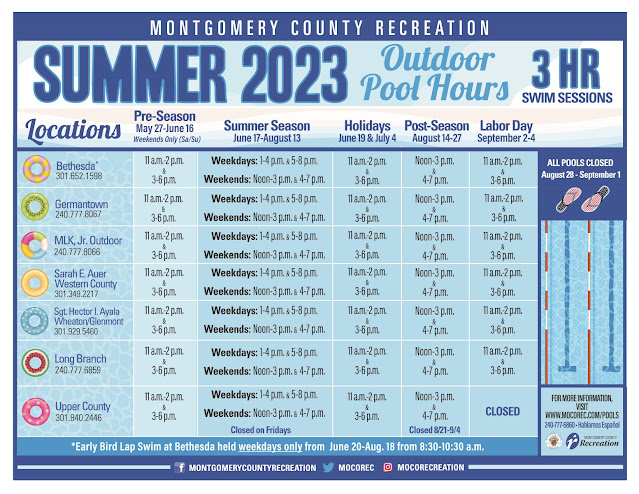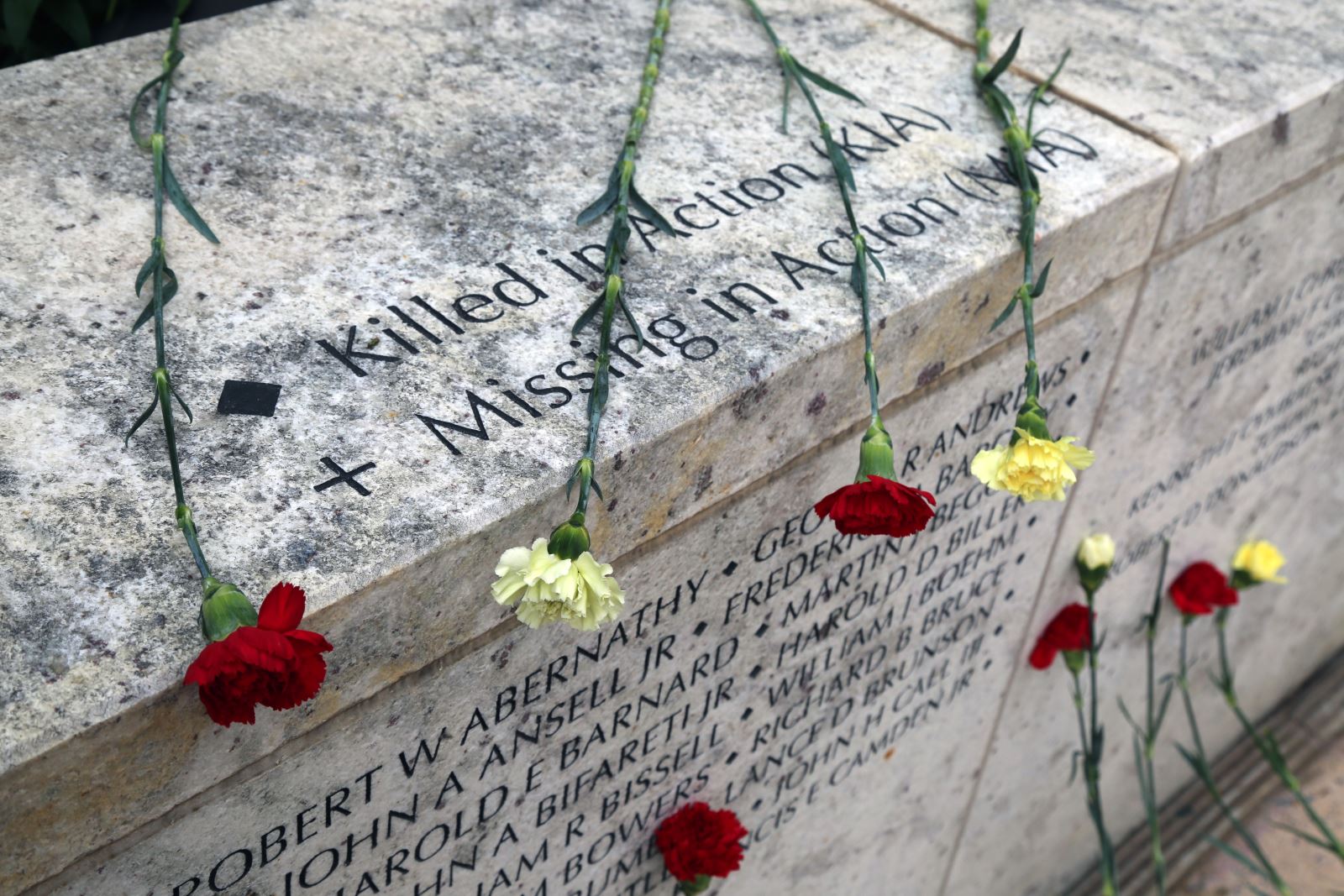Dear friends,
The budget process is over with a final vote from the County Council this week. I appreciate that the Council funded the vast majority of my recommended budget, including the pay for County workers. These include our school health nurses, Ride On bus drivers, social workers, firefighters, police officers and many other dedicated employees. I think everyone recognizes we are in a more competitive market.
However, there have been mischaracterizations I would like to address, and I want to put some actual information out for the public.
Despite statements to the contrary, this has not been the “most transparent” budget process ever at the Council. I served on the Council as an at-large member for 12 years. While there were some decisions made quickly at the end, those were additions, not subtractions from the budget—we were deciding what else could be added, and they represented a tiny portion of the budget, generally between $10 and $20 million.
I appreciate Councilmember Kristin Mink highlighting her concerns about transparency in the process. I also have concerns about how important decisions were made. The terms “high-priority” and “priority” implied that they were items likely to be funded, and yet, that is not what happened. Additionally, the “high-priority” list lost $23 million of items at the last minute without any public discussion after the Council had agreed in public that they were high priorities. It also was not clear that the $44 million for the schools that was on the “priority” list rather than the “high-priority” list would be cut. Or that anything on the “priority” list would likely NOT be funded, even though it was called a “priority.” The total amount of reductions of the “high-priority” and “priority” items totaled more than $70 million.
The final cuts were done in secrecy without a record of which Councilmember voted for or against any of those items. The public has a right to know how people vote, particularly when we are talking about such a large sum of money.
Some of the cuts are not real. They are items that will have to be funded. If the budget does not fund them now, they will come out of reserves at some point this year. For example, there is the Council’s last-minute budget cut of $9.6 million for increased fuel and utilities. We—like everywhere in the country—are facing inflationary cost increases. We must pay the increased costs for fuel and utilities. I do not think anyone wants us to turn out the lights, turn off the air conditioning and heating in rec centers and libraries or stop providing Ride On bus service because we are not paying for the fuel. We will pay these costs.
Other last-minute cuts to the high priority list include important quality of life items like funding for sidewalk repairs, lighting upgrades in urban areas like Silver Spring and Wheaton and rodent-proof trash and recycling bins in Bethesda and Silver Spring. Another cut from the high priority list included funding for overflow sheltering for the unhoused. Without these funds, we will have to decide whether to leave individuals out on the street or go into our reserves for the funding.
This budget also cut funding for small business support, support for climate change assistance intended for businesses and homeowners and reduced staffing that is needed to improve and speed up hiring. This is particularly ironic since the Council made an issue of our pace of hiring.
I want to make a point here about hiring. When we had vacancies during COVID-19, we did not fill all of them because we wanted to wait and see how and when we returned to work and what we would need at that point. We were being careful and intentional about not spending money that we knew would not benefit the County. We were being fiscally responsible and the money we did not spend on salaries shows up as additional money for reserves.
We have a vacancy problem that we are working to address while we are also working on various ways to use our existing positions better. Some Councilmembers made an issue of me not doing enough on restructuring, but during the three years of COVID, it was not possible—or appropriate—to take on restructuring. Since then, we have begun those efforts in some of our departments.
I want to make sure I also talk about funding for the schools and about the tax rate as compared to others in the State and the region. I proposed a 10-cent property tax increase to fund the schools’ unprecedented need.
After I sent my recommended budget to the Council, I spoke with individual Councilmembers and offered ways to reduce the tax by about 3 cents without doing any real harm to the needs of the schools and residents. Additionally, using the schools’ reserves—which the Council did, and I agreed with—would have brought the tax rate to 6 cents.
The final tax rate increase of 4.7 cents leaves us in a difficult situation next year for school funding. By State Maintenance of Effort requirements, we must provide at least the same amount of funding per pupil as we did in the prior year.
If I had done what they just did, I would have been attacked for creating a “structural deficit.” They have provided the schools with funding this year, but required them to use one-time funds to fill the gaps.
I have been accused of being “fiscally irresponsible,” but I am the one who has been transparent about what our needs are and how they can be funded. I have to explain and defend my actions while certain Councilmembers will attack and then support the same policies they criticized me for. And they made big decisions in private, out of public view. I own every decision I made in the budget.
To use terms that were used in Council session, that is “fiscally irresponsible” and puts the County in an “impossible situation.” Actually, I would not say “impossible.” That is ridiculous hyperbole. We have a difficult situation, and I am going to be honest about solutions and next steps.
We are allowed to have differences of opinions, but the conversations and votes need to be in public. And the constant attacks need to stop. I feel compelled to respond to them because of so much mischaracterization.
Some members of the Council attack the Superintendent of Schools and the Board of Education and then do not give them an opportunity to respond, even when they asked for permission to respond.
The school needs are real.
Our per pupil spending, when adjusted for inflation, has gone down since 2010. We are only spending 80 percent of what we used to spend on our schools. The difference in our spending is not just teacher salaries. It is also program levels and the staffing we support. This chart shows where we were in 2010 compared to today: almost $3,000 less per pupil.

We are known nationally for the quality of our schools, and that is because we invested in them. We were known for paying our teachers and other staff well and giving them the supports they needed. That requires investment to attract quality staff and to keep them. Other counties in Maryland now spend more than we do. This is a glance of a few counties.

I want to be clear that nothing has changed within MCPS from when I recommended a budget to now: schools still need the money that would have been collected had the 10-cent property tax increase been approved.
I knew that a 10-cent increase was a lot and I offered multiple times to work with the Council on ways to lower that number without jeopardizing the funding our students and residents need.
The money we will spend on schools this year versus last year is an increase of 8.5 percent, which is good. But how it was funded is not good for next year or the following years.
On the one hand, it funded salaries. On the other hand, it did not fund staffing needs and did not allow increases for inflation, which is a problem that everyone is all too familiar with. Whether it is food for school lunches, repairs and replacement of equipment or the rising costs of fuel for vehicles and building heating and cooling, those increases are real and should have been in the base budget. Additionally, they will increase lapses. Certain positions will go unfilled, which means that classes may find themselves without teachers when subs cannot be found. This is a real problem all schools will face because of these budget decisions. And they are shifting $30 million of operating expenses to ESSR? Elementary and Secondary School Relief funds are one-time sources and operating expenses are ongoing.
The budget approved this week by Council ignores record levels of reserves that could be used. Reserves can also be called a budget surplus. Our surplus is higher than the target of 10 percent that we set. Our administration is the first to achieve these targets. And last year we ended with 14 percent reserves. Additionally, the Council’s budget continues to expect taxpayers to foot the entire bill for retiree benefits, leaving untouched hundreds of millions of dollars in a reserve fund specifically intended to pay those costs.
I already noted that other counties in Maryland spend more per pupil than we do. So do the school districts in Northern Virginia.

Arlington, Falls Church, Alexandria, Fairfax and Loudon counties all spend more per pupil than we do.
Fairfax collects a lot more money from their property tax—more than $3 billion—while we collect about $1.9 billion. They collect more than a billion dollars more than us and they are not much bigger than we are. Plus, Fairfax just lowered its property tax rate to 1.09 cents, which is still higher than what ours would have been with the 10-cent increase I proposed. My proposal would have brought us to almost 1.08 cents. The Council’s rate will be at 1.03 cents, significantly lower than Fairfax newly lowered rate.
Which leads me to talk about taxes and investment. We have to invest in our County—in our schools, neighborhoods, roads, transit and more. We need to continue to make it a great place to live, study and work.
If increasing the property tax is deemed too burdensome for residents, then we need to look elsewhere. Repeatedly, I have shown that our commercial properties are undertaxed as compared to Washington, D.C., and Northern Virginia.
Both commercial property owners and homeowners are paying higher property taxes in Northern Virginia. At the same time, there are people who say that people do not want to come to Montgomery County because of high taxes. The reality is different.
I am happy to note that businesses are coming to Montgomery County and our unemployment rate is the lowest it has been in more than 20 years at 2.0 percent.
For two years I have advocated for measures to allow us to make our income tax more progressive. That would require the State to allow us to go higher than 3.2 percent for high earners so that we can reduce the burden on lower income without losing revenue. I have testified in support of that change for two years, but the Council—two different Councils—have not supported that effort.
I am willing to take difficult stands—asking our private sector to pay its fair share. Making our taxation more progressive, but changing the status quo, is not easy and it is not helped by nasty and inaccurate statements.
The fact is that our commercial taxes are the lowest in the region and the city and the counties with higher tax rates are better able to fund their budgets with less reliance on residents.
It is troubling to watch large commercial property owners talk about their concern for residents and property tax when, in reality, they are generally concerned about the impact on commercial property. They are willing to pay more in Virginia than they are here.
We are a big County, but we are not acting that way when it comes to investing in our schools. It remains our best asset and the biggest part of our County's reputation, which is a large part of why people want to come and raise their families here. For us to allow it to slip to the point where we are spending 80 percent of what we were spending in 2010 is a mistake and the Council just compounded the mistake.
I am thankful that more money will be going towards schools and that is a win. I am glad that 98 percent of my proposed budget remains intact, but I am disappointed by how we got here. Our communities deserve the best schools we can give them. Doing this half measure kicks the can down the road and sets us up for more challenges ahead.
We can handle that challenge, but going forward we have to be honest and transparent about the real issues and solutions.
Signing the Late-Night Business Safety Plan

I’m pleased to share with you that this week I signed the Late-Night Business Safety Plan bill that was passed by the County Council.
I want to thank the County Council for considering the idea that I introduced in February. Following amendments made by the Council, it will apply to Countywide to businesses that provide on-site consumption of tobacco, food, alcohol or cannabis and either: operate between 2 a.m. and 5 a.m.; or operate between midnight and 2 a.m. and have been the subject of two or more service calls for law enforcement to respond to serious incidents during the prior 12 months. The serious incidents would include crimes identified in Executive regulations being developed by the Executive branch.
Each business will be required to develop an emergency evacuation plan and provide 24-hour contact information of the business owner or manager. An acknowledgement that the business has received late night business training from the County, an acknowledgement that the business follows the law and a statement regarding any resolved or pending citations issues by a government entity within the prior three years are expected as well.
These recommendations will be developed in collaboration with multiple County departments consistent with Executive regulations. Grant funding will be available for businesses to use in these security facility enhancements.
My goal with this law was to hold businesses accountable for the disproportionate number of calls to police to handle situations at late-night establishments. This is not about punishing those businesses, but about making our community safer.
We want people to enjoy nightlife in Montgomery County. We want late night businesses to thrive. We also want to ensure safety as much as possible. These measures will help accomplish these goals.
Emphasis on Road Safety
The past week has been heartbreaking for all of us who care about keeping our streets safe for drivers, cyclists and pedestrians. We have seen too many crashes all over our County result in serious injury and death. There is no throughline to these incidents—not one thing that we could change that would have prevented those four deaths over the past week. One thing I can emphasize, as AAA estimates more people in four years prepare to hit the road this Memorial Day weekend: the faster you are going, the longer it takes to stop.
AAA’s ‘100 Deadliest Days’ initiative is aimed at teen drivers. Teens with cars will be on the road more once school ends, but the lessons from the education program are universal:
- Slow down
- Stay off cell phones
- Avoid drugs and alcohol before getting behind the wheel
The Montgomery County Department of Transportation is urging drivers to be safe, be aware and be responsible. Last year, we saw 46 fatal crashes in the County, killing 50 people. That is nearly one a week. Of the 16 people killed on the roads this year, half are likely the result of drunk driving. The Montgomery County Police Department and allied local and State police departments will be on the roads with enhanced patrols and sobriety checkpoints to get impaired drivers off the road.
Our Vision Zero program understand the importance of slowing drivers down. Over the last few years, the speed limit has been lowered on dozens of neighborhood streets across the County. This map shows you where the speed limits have been dropped.

Sometimes even bigger roads connecting home to work like Montrose Road and Sam Eig Highway need lower speed limits as well. The State Highway Administration also recently lowered speeds on roads throughout the County, like Veirs Mill Road, Georgia Avenue, Great Seneca Highway and New Hampshire Avenue.
The idea is to slow drivers down and give them more time to react to hazards and other drivers on the road. We are trying to prevent losing friends and family on the roads. We want to eliminate serious and fatal collisions on County by the year 2030. I encourage you to learn more about our plan by clicking here to be taken to the latest Vision Zero Action Plan and Report.
Please have a wonderful Memorial Day weekend. If you are headed to the parade in Rockville on Monday, I will see you there.
County Executive









